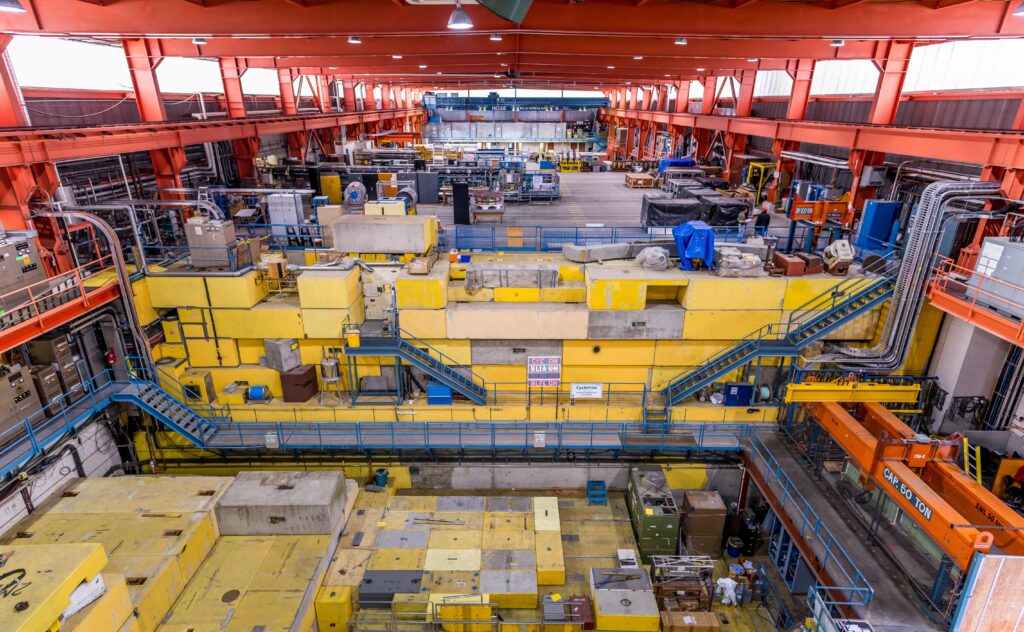TRIUMF is one of the leading international facilities in sub-atomic physics, in particular in the production of exotic isotopes and medical isotopes. Full membership in the consortium of TRIUMF (and thus shared ownership with the other member universities) offers clear reputational benefits that strongly align with the goals of TRIUMF’s academic partners. Furthermore, membership in the facility enhances each member university’s profile in this field, as TRIUMF plays a leadership role in its program areas far beyond its walls. As owners of the facility, universities partner in all of TRIUMF’s operations, and not just those with direct participation of a single institution.

Membership
Overview
At its core, TRIUMF is a partnership among leading Canadian research and technical universities from coast to coast.
TRIUMF continues to welcome new member applications as part of its ongoing pursuit to enable the highest quality research in Canada and contribute to innovation and discovery on an international scale.

Benefits of Membership with TRIUMF
Reputational benefits
Alignment with University Programs:
With regard to academic priorities, leadership of the TRIUMF facility contributes to university efforts and priorities, including:
- Interdisciplinarity (TRIUMF operations include activities in physics, chemistry, engineering, materials science, and medicine)
- Leadership
- International engagement (TRIUMF research projects are almost all international collaborations)
- Talent recruitment and retention (access to TRIUMF assists in faculty and HQP recruitment)
- Teaching and research integration (TRIUMF operates an extensive undergraduate summer student program, as well as being a prime research facility for graduate students)
As an active research centre, TRIUMF also maintains an atmosphere of intellectual curiosity and activity through seminars, visitor programs, tours, and workshops, which are made available as feasible for member university communities and contacts.
Specific benefits
University faculty will see value from the enhanced quality of their research programs, as access to the TRIUMF network allows all members – big and small universities alike – to participate in larger-scale national and international research collaborations. TRIUMF scientists are expected to hold adjunct appointments at member universities in order to enhance student training. Conversely, member institutions are given the opportunity to put forward individuals to serve on TRIUMF’s various governance bodies, including the Board of Governors, Members’ Council, and Science Council. These bodies direct the work of TRIUMF, including direct input into TRIUMF’s future scientific endeavours.
Expectations of Members
TRIUMF succeeds because it is a partnership. It provides tangible benefits to its member universities but also must rely on its members for support. As such, there are several expectations that TRIUMF has of its members. Each member university must have a willingness to contribute CFI allocations to major projects that help build TRIUMF’s infrastructure and share the financial liability that may occur from the decommissioning of TRIUMF. TRIUMF also expects members to actively participate in TRIUMF’s programs when relevant and appropriate to their own research or pedagogical activities. Furthermore, members are responsible for administrative costs associated with membership, such as travel-related expenses to attend Members’ Council meetings.
Intake and eligibility requirements:
TRIUMF is currently welcoming new membership applications as part of a rolling, continuous call for new members. Prospective TRIUMF member organizations:
- Must be an accredited Canadian university (including technical universities)
- Must have academic or research linkages to TRIUMF’s research areas
- Must have established connections to TRIUMF’s infrastructure, staff, or supported collaborations
More information about the TRIUMF Membership Application Process.
Questions? Please reach out to BOG@triumf.ca.
